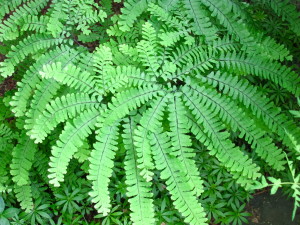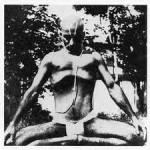Last week we looked at the obstacles that crop up for the more experienced students Patanjali addresses in the Samaadhi Paada, the first of the four chapters that cover the study of yoga. For those of us here, the awakening is proceeding along, but as we quickly realize, awakening  is the beginning of yoga, not the end goal. Years of karma and negative psychological and emotional habits do not just disappear, but, with proper understanding and continued practice, they can become food for spiritual growth. Add in the societal and planetary karmic challenges we also face and there is nourishment for all of us for many incarnations to come.
is the beginning of yoga, not the end goal. Years of karma and negative psychological and emotional habits do not just disappear, but, with proper understanding and continued practice, they can become food for spiritual growth. Add in the societal and planetary karmic challenges we also face and there is nourishment for all of us for many incarnations to come.
So, how do we develop proper understanding and practice? Patanjali jumps in with both feet to help us right at the beginning of the Samadhi Pada. In sutra I-12, abhyaasa-vairaagyaabhyaam tan-niroddhah ,he introduces the ‘yin and yang of spiritual practice, abhyaasa and vairagyam, as the primary upayas (skillful means) to attenuate these habits and stabilize the samadhi state. “The negative vrittis (described in the previous sutras) are resolved through practice and dispassion.”
Abhyaasa describes how to invest your your embodied energy, be it physical, psychological, emotional, relational, or spiritual (which essentially covers all of these.) Patanjali’s advice; invest your energy in stabilizing your spiritual health. I-13: tatra sthitau yatno’bhyaasah. The Sanskrit root ‘stha’ shows up every where in the spiritual teaching of India and indicates stability, steadiness and stillness. Sthira sukham asanam, II-46, is well known to hatha yogis. In chapter 2 of the Bhagavad Gita, Krishna describes ‘sthita prajna, stable wisdom, as the goal of life to Arjuna. (See also PYS: I-35, II-18, II-39, III-31).
Modern neuroscience also has a deep appreciation for the need to stabilize emotionally healthy mind states, and how growth and development requires the capacity to stabilize new learning in the process of integration. (See all writings by Dan Siegel, Rick Hanson etc). From Hebb’s Axiom we know that continuous attention brings stability. “Neurons that fire together, wire together.” In sutras I-33 – I-39, Patanjali gives us our meditation practice many possible neuronal pathways to ‘attend to’ and stabilize the healthy states. An ‘awakened’, i.e., ‘heart centered’ hatha yoga practice is another powerful way to build a healthy form of spiritual stability. As we will see a bit later, our choices off the mat also offer the opportunity to practice ‘abhyaasa’.
Because what we pay attention to over and over ‘sticks’ in the mind field, for better or worse, Patanjali also includes vairagyam, dispassion, with abhyaasa. Here, dispassion  means the recognizing of the unhealthy psychological, emotional and spiritual patterns that we are habituated to, and consciously choosing, through mindful awareness, to stop ‘feeding’ those patterns with energy. If we use a river as a metaphor for the flow of energy through the mind field, vairagyam is the intelligence, the buddhi, building dams, barriers or gates to direct the flow of mental energy away from the fields of suffering, while abhyasa creates new channels to send that energy to places that are healing, nurturing and stimulating to
means the recognizing of the unhealthy psychological, emotional and spiritual patterns that we are habituated to, and consciously choosing, through mindful awareness, to stop ‘feeding’ those patterns with energy. If we use a river as a metaphor for the flow of energy through the mind field, vairagyam is the intelligence, the buddhi, building dams, barriers or gates to direct the flow of mental energy away from the fields of suffering, while abhyasa creates new channels to send that energy to places that are healing, nurturing and stimulating to  growth and further awakening. This takes a lot of ‘self study’ as we have to learn to discriminate between healthy (flowing through our heart) and unhealthy (flowing through our egoic or self centered beliefs) habits and actions. Sometimes, especially on the subtle levels and when it comes to our relationships with family and friends, this is not at all clear .
growth and further awakening. This takes a lot of ‘self study’ as we have to learn to discriminate between healthy (flowing through our heart) and unhealthy (flowing through our egoic or self centered beliefs) habits and actions. Sometimes, especially on the subtle levels and when it comes to our relationships with family and friends, this is not at all clear .
Therefore, in addition to our personal practice, our relational, cultural and societal choices are also included cultivating stability and dispassion. After a long day at work, we could choose to go to a bar, or a yoga class. We can work to find a collection of friends and mentors that support and nurture our spiritual aspirations. Every time we meet and are relating another human being, a social group, or any living being, we have the chance to practice mindful awareness and choose, as best possible, to channel our energies through the heart field and not our whiny, self defensive egoic structures. Moment to moment, say yes to this, no to that. In this way habits change through conscious choice and the awakening stabilizes creatively and dynamically.







